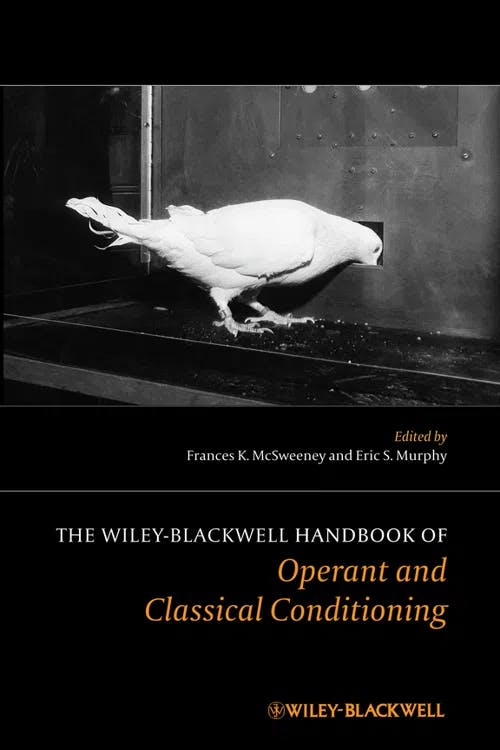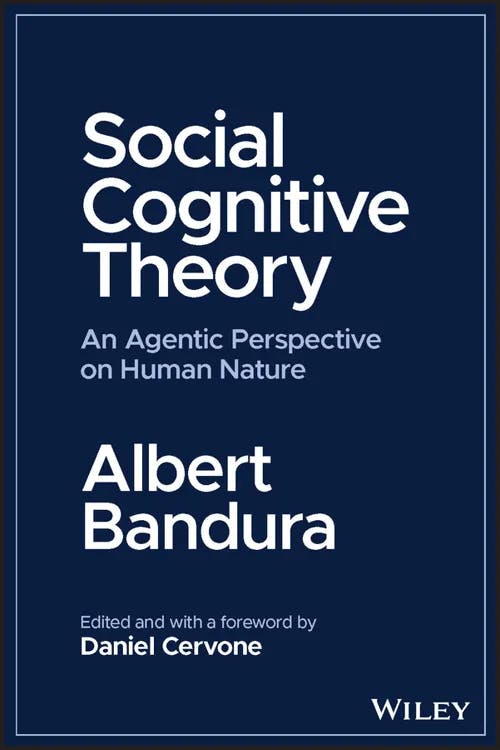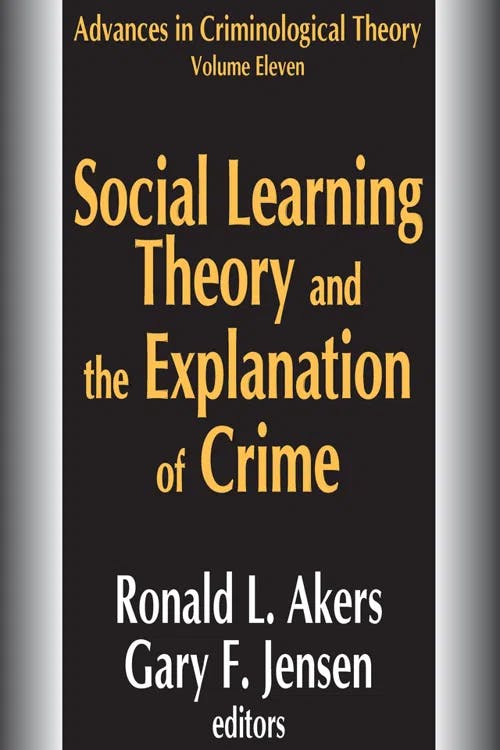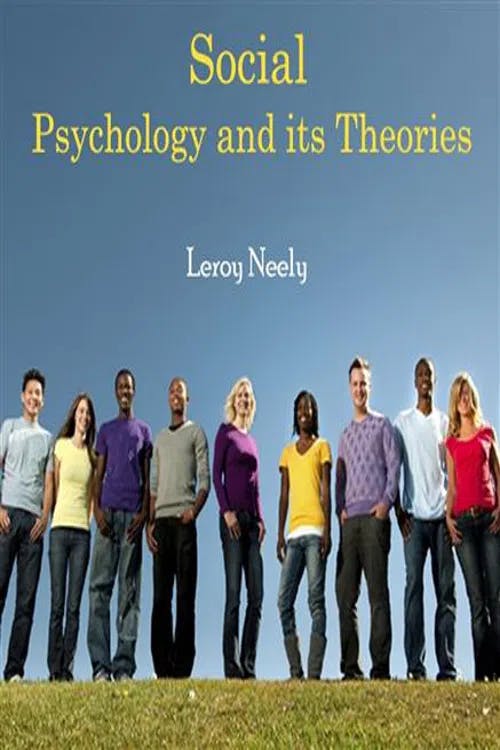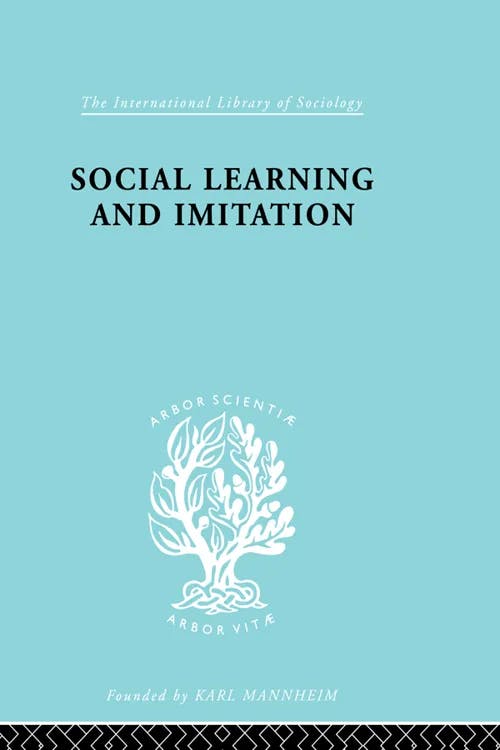What is Social Learning Theory?
MA, Gender Studies (London School of Economics & Political Science)
Date Published: 27.07.2023,
Last Updated: 10.08.2023
Share this article
Defining social learning theory
Social learning theory is a theory of psychology developed by psychologist Albert Bandura, who published his book, Social Learning Theory, in 1977. Social learning theory is an explanation of human social behavior that argues that “people are most likely to learn the behavior that can produce valued outcomes via role modeling” (Chen, Zhang, and Jia, 2020). Bandura developed social learning theory as a response to other theories of behavior which, he believed, did not fully account for all motivators for learning and behavior acquisition.
Social learning theory’s foundations emerged from the work of Ivan Pavlov and B. F. Skinner, who conceptualized classical and operant conditioning respectively. Classical conditioning postulates that people (and many animals) can learn behavior by associating an outcome with a stimulus; for example, if a bell is rung every time a dog eats, he will learn to salivate at the sound of the bell. This conditioning outcome is often a passive reflex; in this circumstance, the dog does not make the conscious decision to salivate in response to the bell, but has learned to through this association with stimuli that usually encourages salivation (food). Skinner built on Pavlov’s discoveries by arguing that other behaviors can be reinforced by operant conditioning, a method that teaches behavior through rewards and punishments — like conditioning a mouse to press a button in order to receive a positive outcome such as food, or to not eat food in order to avoid a negative outcome such as an electrical shock. This behavior is more active and shows how living beings can learn to seek out rewards in return for learned behavior. To explain operant conditioning in more simple terms, we may quote Skinner’s description as referenced in The Wiley Blackwell Handbook of Operant and Classical Conditioning:
Operant conditioning is a form of learning in which the frequency of a behavior is controlled by its consequences. (Eric S. Murphy and Gwen J. Lupfer, 2014)
Edited by Frances K. McSweeney and Eric S. Murphy
Operant conditioning is a form of learning in which the frequency of a behavior is controlled by its consequences. (Eric S. Murphy and Gwen J. Lupfer, 2014)
In the early to mid-1900s, this “behaviorist” explanation for learning and information acquisition dominated psychology, but Albert Bandura believed that there were forms of behavior that couldn’t be explained by conditioning alone — and that it was possible for behaviors to be learned and reinforced outside of an association or rewards & punishment framework.
Bandura’s social learning theory is supported by his most famous study, The Bobo Doll Experiment, conducted first in 1961. This experiment involved adults demonstrating physically aggressive behavior towards a doll, which was observed by children in the room with the adult and doll. When a large number of these child participants copied the behavior of the adults when left alone with the doll, this imitation without reinforcement with rewards or punishments was seen as evidence that behavior can be learned without conditioning. Colette Gray and Sean MacBlain explain Bandura’s perspective on these findings in Learning Theories in Childhood:
They were in fact engaging in behaviours they had observed but that had not been reinforced. Learning was, therefore, taking place, not as behaviourists of the time would have argued, as a result of reinforcement, but as a result of observation. Bandura believed that the stimulus–response explanation of learning proposed by the early behaviourists was overly simplistic and did not go far enough in explaining human behaviour and emotions. (2015)
Colette Gray and Sean MacBlain
They were in fact engaging in behaviours they had observed but that had not been reinforced. Learning was, therefore, taking place, not as behaviourists of the time would have argued, as a result of reinforcement, but as a result of observation. Bandura believed that the stimulus–response explanation of learning proposed by the early behaviourists was overly simplistic and did not go far enough in explaining human behaviour and emotions. (2015)
Bandura broke down the outcomes of social learning into two groups: imitation and identification. In imitation, a person will merely copy the behavior modeled for them, often only in a specific social context, without adopting any other habits or characteristics. However, in identification, an individual may internalize entire belief systems, habits, or values being modeled. The latter is much more likely to occur through the influence of a role model or close friend or family member, while the former can occur with a stranger. With imitation, for example, a child or adolescent may copy the gestures and comportment of an adult at a more formal or unfamiliar event, such as at a funeral. With identification, we can imagine a young person experiencing radicalization — being led to believe in extremist ideas which they take into parts of their life where even the person who modeled these values or ideas is not present.
Bandura’s Bobo Doll experiment and his subsequent research filled a gap in psychologists’ understanding of human behavior and knowledge acquisition — and helped to explain how particular approaches to stimuli are developed even without obvious reinforcement through rewards or punishment. However, Bandura’s development of social learning theory was not intended to overshadow or negate the value of other perspectives on learning and knowledge acquisition. Gray and MacBlain go on to explain Bandura’s stance on multi-theoretical approaches to understanding behavior:
Bandura’s social learning theory has its roots in behaviourism. Whilst sharing the experimental approaches of his contemporaries, Bandura argued that to exclude thinking from any theory of learning would be like reducing ‘Shakespeare’s literary masterpieces to his prior instruction in the mechanics of writing’. (2015)
So when we think of social learning theory, it often helps to consider it a complementary theory that can be integrated with other explanations of behavior, including (but not limited to) Pavlov and Skinner’s ideas of classical and operant conditioning. Bandura’s foundational version of social learning theory has also been expanded upon within other disciplines and fields of human research, as we will explore further in the next section.
Using social learning theory to explain behavior
Social learning theory, having emerged from psychological research on children, is very often used to explain the development of behaviors and practices of individuals in childhood, in the field of developmental psychology. However, social learning theory has also proven immensely popular as an explanation for socially inappropriate or harmful behavior within the fields of both criminal psychology and criminology. Criminal psychologists and criminologists apply social learning theory to consider if, and how, the anti-social behavior of criminals is established and/or reinforced by modeling of this behavior, which consequently facilitates the imitation of these behaviors. Social learning theory has even been used to explain how violent and criminal behavior may be learned through our media influences, such as video games or film. Bandura himself predicts how behavior may be learned from media influence:
Although much social learning is fostered through observation of models who are physically present in one’s environment, advances in communication have increased people’s reliance upon symbolic models. People commonly pattern their behavior after models they observe in verbal or pictorial form, in print media or electronically. Without the guidance of handbooks or videos that display effective behaviors in particular situations, members of technologically advanced societies would spend much of their time groping for effective ways of handling recurring challenges of modern life. (2023)
Albert Bandura
Although much social learning is fostered through observation of models who are physically present in one’s environment, advances in communication have increased people’s reliance upon symbolic models. People commonly pattern their behavior after models they observe in verbal or pictorial form, in print media or electronically. Without the guidance of handbooks or videos that display effective behaviors in particular situations, members of technologically advanced societies would spend much of their time groping for effective ways of handling recurring challenges of modern life. (2023)
Social learning theory has therefore played a large role in explaining and predicting harmful behavior — and the mechanisms that allow for that behavior to be reinforced. In Social Learning Theory and the Explanation of Crime (2017), criminologist Ronald Akers and sociologist Gary Jensen (alongside other contributors) explore how to apply an expanded definition of social learning theory, referred to as “Akers’ social learning theory” to socially deviant and disruptive behavior. The key difference between Bandura’s standard definition of social learning theory and Akers’ expansion is that, in Akers’ interpretation of the theory, people learn new behaviors, values, and attitudes through observing and imitating those they associate with — the individuals in their immediate social circles. In these social circles, the positive consequences of their behavior (such as a sense of belonging or social inclusion) may outweigh the negative consequences (such as the risk of jail time or ostracism from wider society), which reinforces this desire to imitate and integrate oneself into the behavior of the group. As an example, Christine S. Sellers, John K. Cochran, and L. Thomas Winfree, Jr. explain male-on-female relationship violence in response to relationship stressors through the lens of this version of social learning theory:
The experience of stress leads the man to seek support from male peers, typically within all-male social groups (e.g., fraternities, athletic teams, gangs, etc.). Within these groups, values are promulgated that legitimate, justify, and even encourage the abuse of certain types of women. (Sellers, Cochran, and Winfree, Jr., “Social Learning Theory and Courtship Violence: An Empirical Test” in Social Learning Theory and the Explanation of Crime, 2017)
Edited by Ronald L. Akers and Gary F. Jensen
The experience of stress leads the man to seek support from male peers, typically within all-male social groups (e.g., fraternities, athletic teams, gangs, etc.). Within these groups, values are promulgated that legitimate, justify, and even encourage the abuse of certain types of women. (Sellers, Cochran, and Winfree, Jr., “Social Learning Theory and Courtship Violence: An Empirical Test” in Social Learning Theory and the Explanation of Crime, 2017)
Sellers, Cochran, and Winfree, Jr. expand on this to delineate the role of imitation in the context of these relationships:
While extant theories of courtship violence have limitations, a common thread in each of these theories is the notion that violence against intimates is learned, either by imitation across generations or through the transmission of group values. (2017)
So although Sellers, Cochran, and Winfree, Jr. do not exclusively assign the mechanism of imitation to one social circle (e.g. close relatives, friendship groups), they acknowledge how imitation of what is taught — at a young age or during adulthood — better explains intimate partner violence than the idea that this behavior was learned through classical or operant conditioning. Although the idea that we develop behaviors through imitation may seem relatively self-evident, it is through research by scholars such as Bandura and Akers that evidence strongly supporting this theory of learning has been procured, thus making this theory more than a mere hypothesis.
Criticisms of social learning theory
Social learning theory is a well-respected and oft-applied theory in the field of psychology. Nevertheless, criticisms do exist pertaining to its explanation of how new behavior is learned, not simply acquired. In Social Psychology and its Theories (2014), Leeroy Neely differentiates learned behavior and spontaneous, single-event acts of social imitation through the presence of reinforcement:
[...] if an individual's behaviour does not contact reinforcement following the imitation of the modelled behaviour, the behaviour will not maintain and therefore is not truly learned. It would remain an individual occurrence of imitation unless reinforcement was contacted. (2014)
Leeroy Neely
[...] if an individual's behaviour does not contact reinforcement following the imitation of the modelled behaviour, the behaviour will not maintain and therefore is not truly learned. It would remain an individual occurrence of imitation unless reinforcement was contacted. (2014)
In simple terms, imitation does not mean a permanent change in behavior. Neely speculates that without reinforcement of such behavior, imitation does not become a habitual, recurring behavior and may simply be a one-off event.
In addition, it is also important to differentiate between learned behaviors and learned habits. Behaviors are best described as responses to an environment, while habits are routine behaviors, occurring regularly. For example, a behavior could be a child beating up the Bobo Doll after it is modeled for them in Bandura’s experiment. A habit could be one of those children leaving the experiment and routinely attacking every large doll they come across. Although the consensus within psychology is largely that behaviors can be learned through imitation, the learning of habits through imitation is not as agreed upon. In Social Learning and Imitation (2013), John Dollard and Neal Miller draw conclusions from research into the loss of habits and social responses:
mere repetition does not strengthen a habit. Instead, non-rewarded repetitions progressively weaken the strength of the tendency to perform a habit. Usually the tendency to perform a habit does not disappear immediately. The number of trials required for extinction depends on the strength of the habit, on the particular conditions of extinction, and on past experience with non-rewarded trials.
John Dollard and Neal E. Miller
mere repetition does not strengthen a habit. Instead, non-rewarded repetitions progressively weaken the strength of the tendency to perform a habit. Usually the tendency to perform a habit does not disappear immediately. The number of trials required for extinction depends on the strength of the habit, on the particular conditions of extinction, and on past experience with non-rewarded trials.
Although social learning theory can account for how behaviors are learned, their maintenance or development into long-term habits is a more complex matter. Situational contexts and the social value of these behaviors and habits may play a role in how often they are repeated and, where necessary, reinforced.
Significant texts on social learning theory
Social learning theory is grounded in “nurture” explanations of behavior — the idea that our behavior is not innate in our biology and is adopted based on what we are exposed to in our environment. For scholars looking to better understand how biology ties into the development of socially-influenced behavior, Social Learning: Psychological and Biological Perspectives (2013) edited by Thomas Zentall and Bennett Galef provides a broader, more multidisciplinary perspective on social learning practices. Featuring examples spanning human and animal behavior, this text diversifies the conversation around social learning and will be especially useful for students in the field of evolutionary psychology.
Another useful text for scholars looking to compare social learning to other psychological theories is An Introduction to Social Psychology: Global Perspectives (2014). James Alcock and Stan Sadava compare social learning theory to ideas about compliance, internalization, conditioning, and even the role of mirror neurons in the structure of our brains. Addressing how social learning affects language acquisition, communication, aggression, prosocial behavior, and cooperation, this book’s compare-and-contrast approach to social psychology’s theories is very effective for psychologists looking to apply multi-theory explanations of behavior to research findings.
For scholars looking to better understand the origins of social learning theory — specifically, how Albert Bandura’s Bobo Doll experiment was conducted — Chapter 9 of Social Psychology: Core Concepts and Emerging Trends (2015) by Daniel Barrett provides a full explanation and analysis of this study. Written with accessibility in mind, Barrett’s text allows readers to build their knowledge of theories of social behavior from the ground up, without avoiding crucial details and relevant critiques of involved studies. Barrett’s book is a highly recommended read for those new to the social sciences or approaching psychology from a different disciplinary field.
Social learning theory is a theory which can truly be described as foundational; Bandura’s research into the roles of imitation and modeling in human behavior shaped the way both scholars of psychology and laypeople think about how we learn. We continue to see the impact of social learning theory in research across academic disciplines and, as our understanding of human behavior develops, it seems likely that social learning theory will remain a central element in the explanation and analysis of behavior acquisition.
Further reading on Perlego
Social Learning: An Introduction to Mechanisms, Methods, and Models (2013) by William Hoppitt and Kevin N. Lala
The Wiley Blackwell Handbook of Operant and Classical Conditioning (2014) edited by Frances K. McSweeney and Eric S. Murphy
Imitation and Social Learning in Robots, Humans and Animals: Behavioural, Social and Communicative Dimensions (2007) edited by Chrystopher L. Nehaniv and Kerstin Dautenhahn
Developmental Psychology: Revisiting the Classic Studies (2012) edited by Alan M. Slater and Paul C. Quinn
What is social learning theory in simple terms?
Who created social learning theory?
What is the difference between classical and operant conditioning?
How are classical and operant conditioning different from social learning theory?
What is the difference between imitation and identification?
What is an example of social learning theory?
Bibliography
Alcock, J. and Sadava, S. (2014) An Introduction to Social Psychology: Global Perspectives. SAGE Publications. Available at: https://www.perlego.com/book/1431613/an-introduction-to-social-psychology-global-perspectives-pdf
Akers, R. L. and Jensen, G. F. (eds.) (2017) Social Learning Theory and the Explanation of Crime. Routledge. Available at: https://www.perlego.com/book/1576499/social-learning-theory-and-the-explanation-of-crime-pdf
Bandura, A. (2023) Social Cognitive Theory. Wiley. Available at: https://www.perlego.com/book/3866873/social-cognitive-theory-an-agentic-perspective-on-human-nature-pdf
Bandura, A. and Walters, R.H., 1977. Social Learning Theory (Vol. 1). Prentice Hall.
Barrett, D. W. (2015) Social Psychology: Core Concepts and Emerging Trends. SAGE Publications. Available at: https://www.perlego.com/book/2800816/social-psychology-core-concepts-and-emerging-trends-pdf
Chen, L., Zhang, Z. D. and Jia, W. T. (2020) “When and why leaders’ helping behavior promotes employees’ thriving: Exploring the role of voice behavior and perceived leader’s role overload,” Frontiers in Psychology, 11(553512), pp. 1-13.
Dollard, J. and Miller, N. E. (2013) Social Learning and Imitation. Routledge. Available at: https://www.perlego.com/book/1680470/social-learning-and-imitation-pdf
Gray, C. and MacBlain, S. (2015) Learning Theories in Childhood. 2nd edn. SAGE Publications. Available at: https://www.perlego.com/book/3740269/learning-theories-in-childhood-pdf
Neely, L. (2014) Social Psychology and Its Theories. The English Press. Available at: https://www.perlego.com/book/1241802/social-psychology-and-its-theories-pdf
McSweeney, F. and Murphy, E. (2014) The Wiley Blackwell Handbook of Operant and Classical Conditioning. 1st edn. Wiley. Available at: https://www.perlego.com/book/1004144/the-wiley-blackwell-handbook-of-operant-and-classical-conditioning-pdf
Sellers, C., Cochran, J., and Winfree Jr., L, (2017) “Social Learning Theory and Courtship Violence: An Empirical Test”, Social Learning Theory and the Explanation of Crime. Routledge. Available at: https://www.perlego.com/book/1576499/social-learning-theory-and-the-explanation-of-crime-pdf
Social Learning Theory (no date) WorldCat.org. Available at: https://www.worldcat.org/title/Social-learning-theory/oclc/681156484
Zentall, T. R. and Galef, B.G. (eds.) Social Learning: Psychological and Biological Perspectives. Psychology Press. Available at: https://www.perlego.com/book/1553816/social-learning-psychological-and-biological-perspectives-pdf
MA, Gender Studies (London School of Economics & Political Science)
Georgie Williams is a deferred doctoral student in the field of Social Justice at University College Dublin and founder of gender & sexuality research hub, /Queer. Georgie’s research predominantly focuses on the development of gender and sexuality related social practices in post-colonial countries and the application of reflexive feminist methodologies to anthropological and sociological field research.

